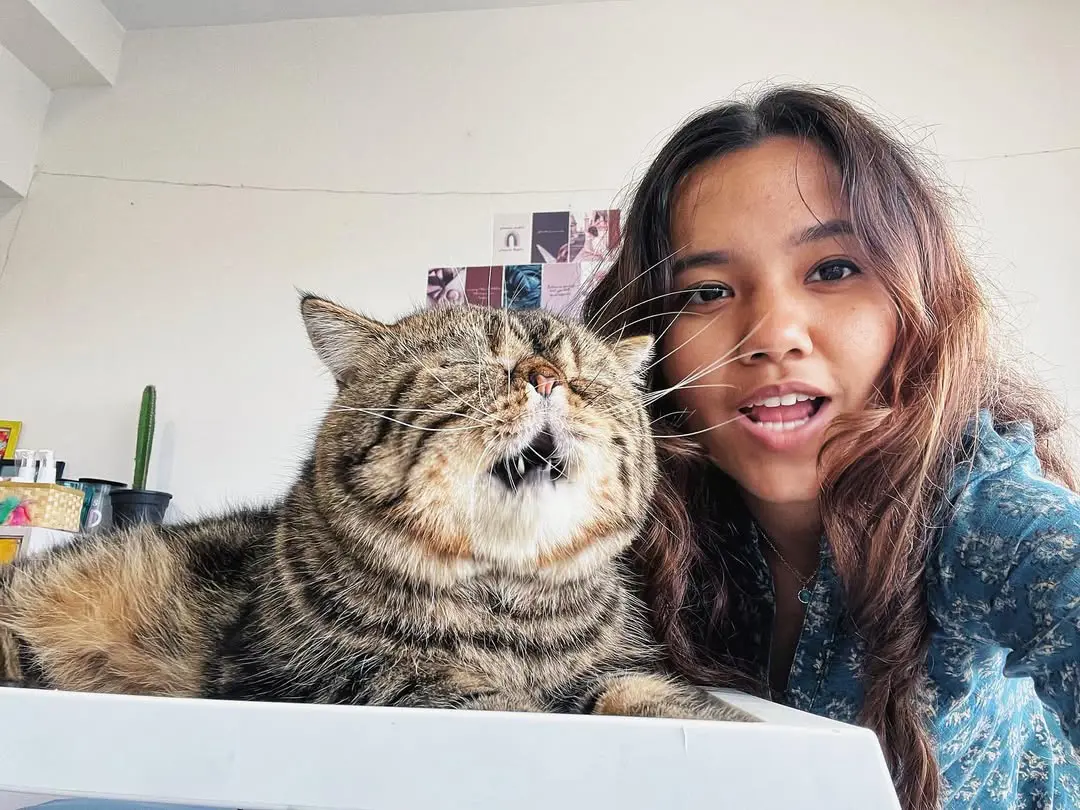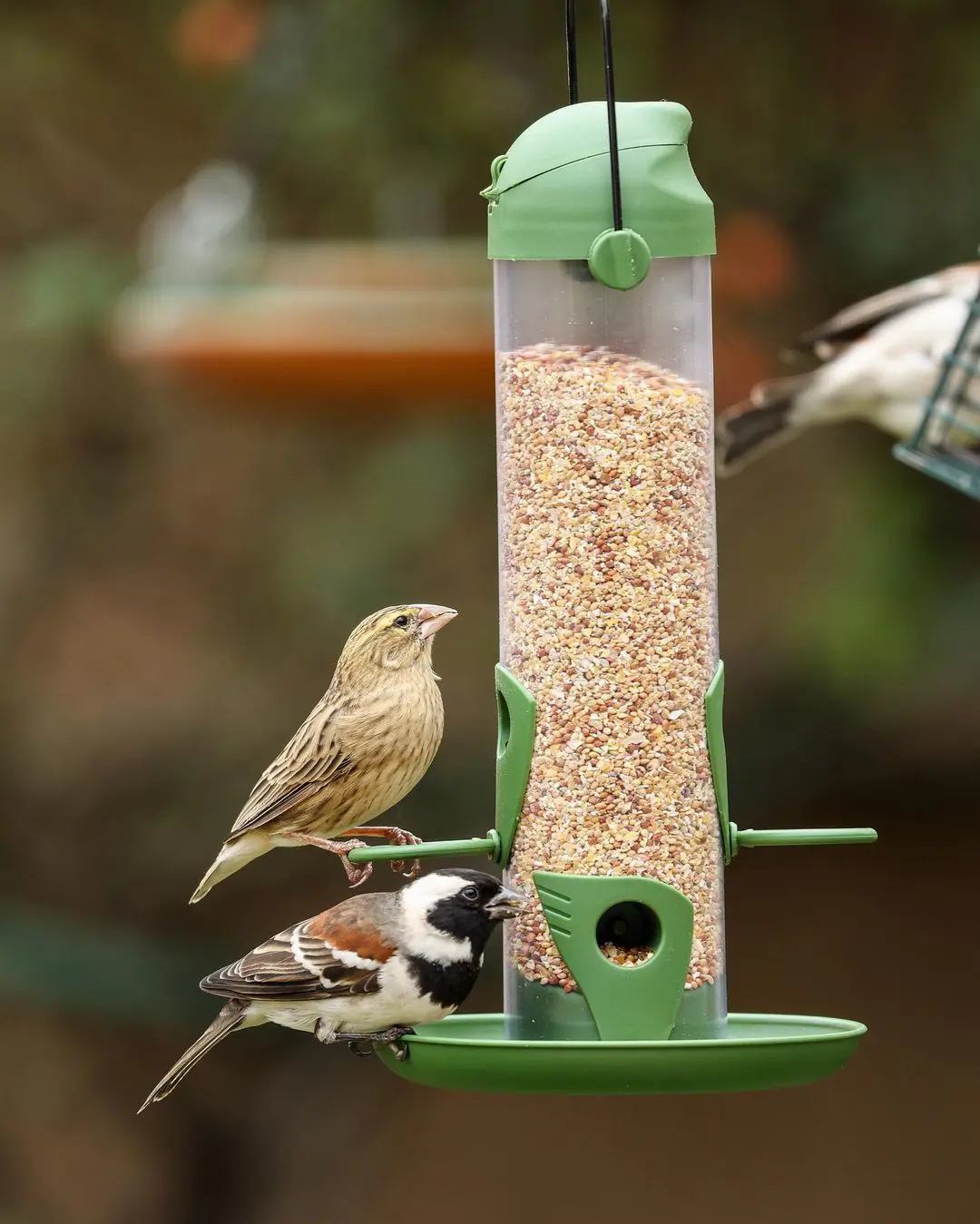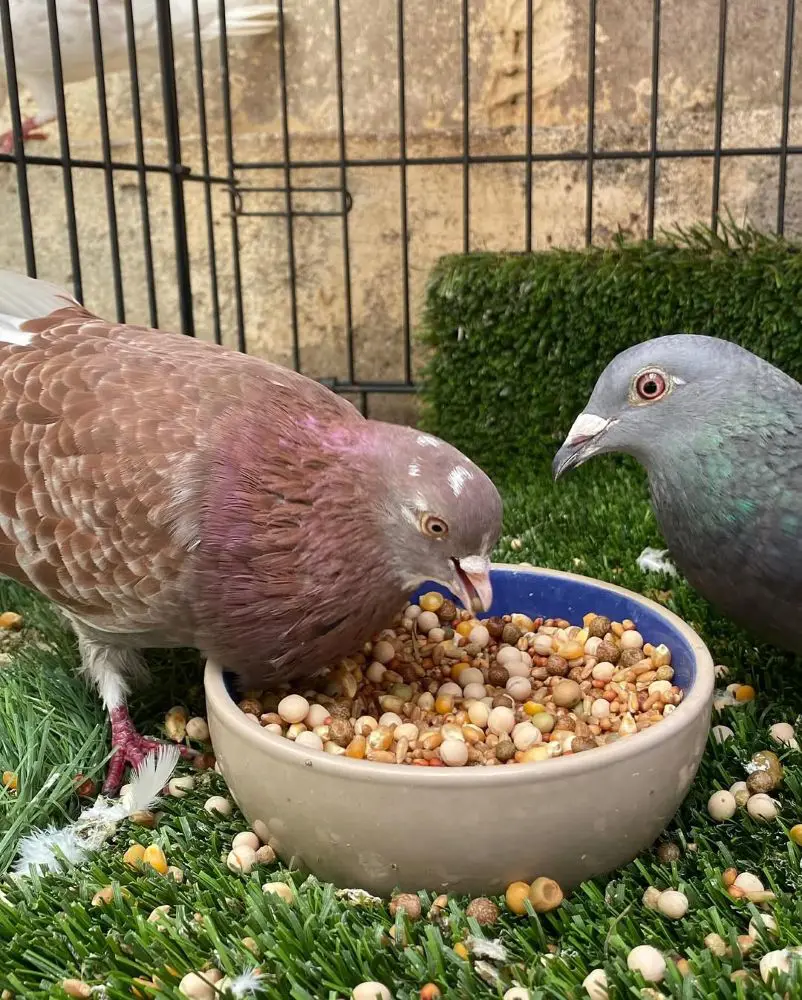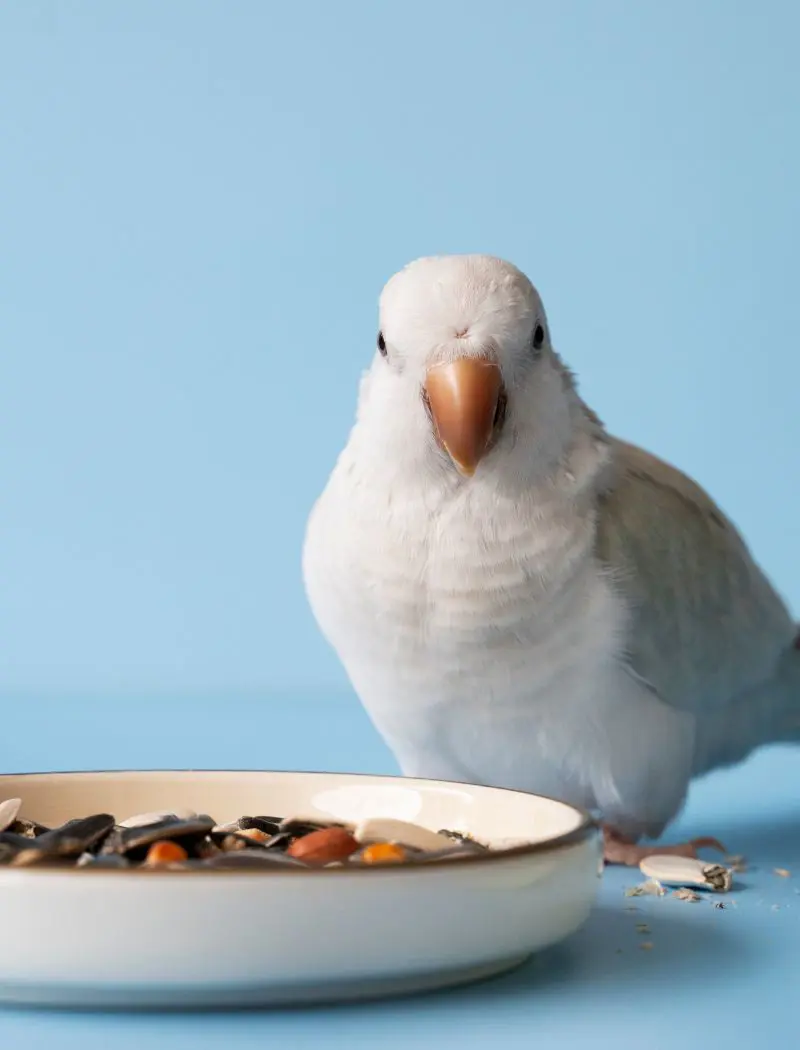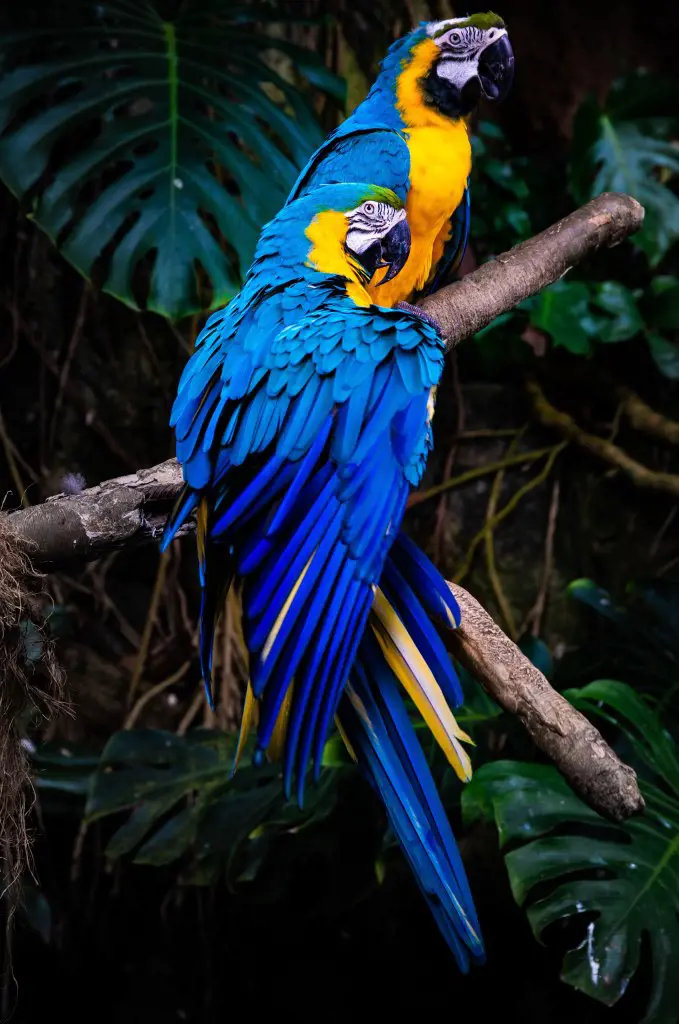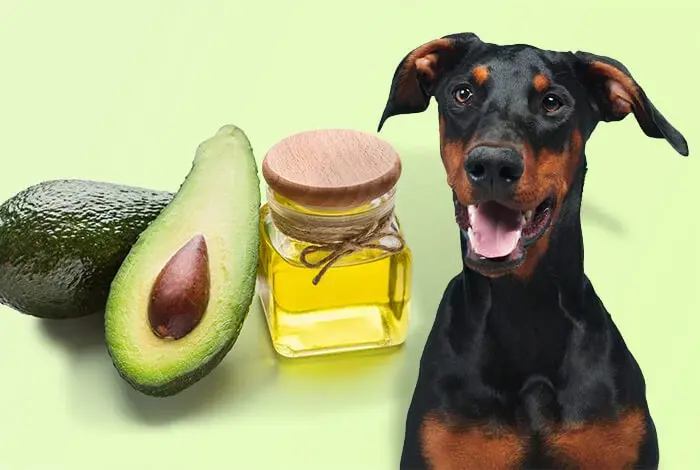Blue Parrots Facts And Characteristics
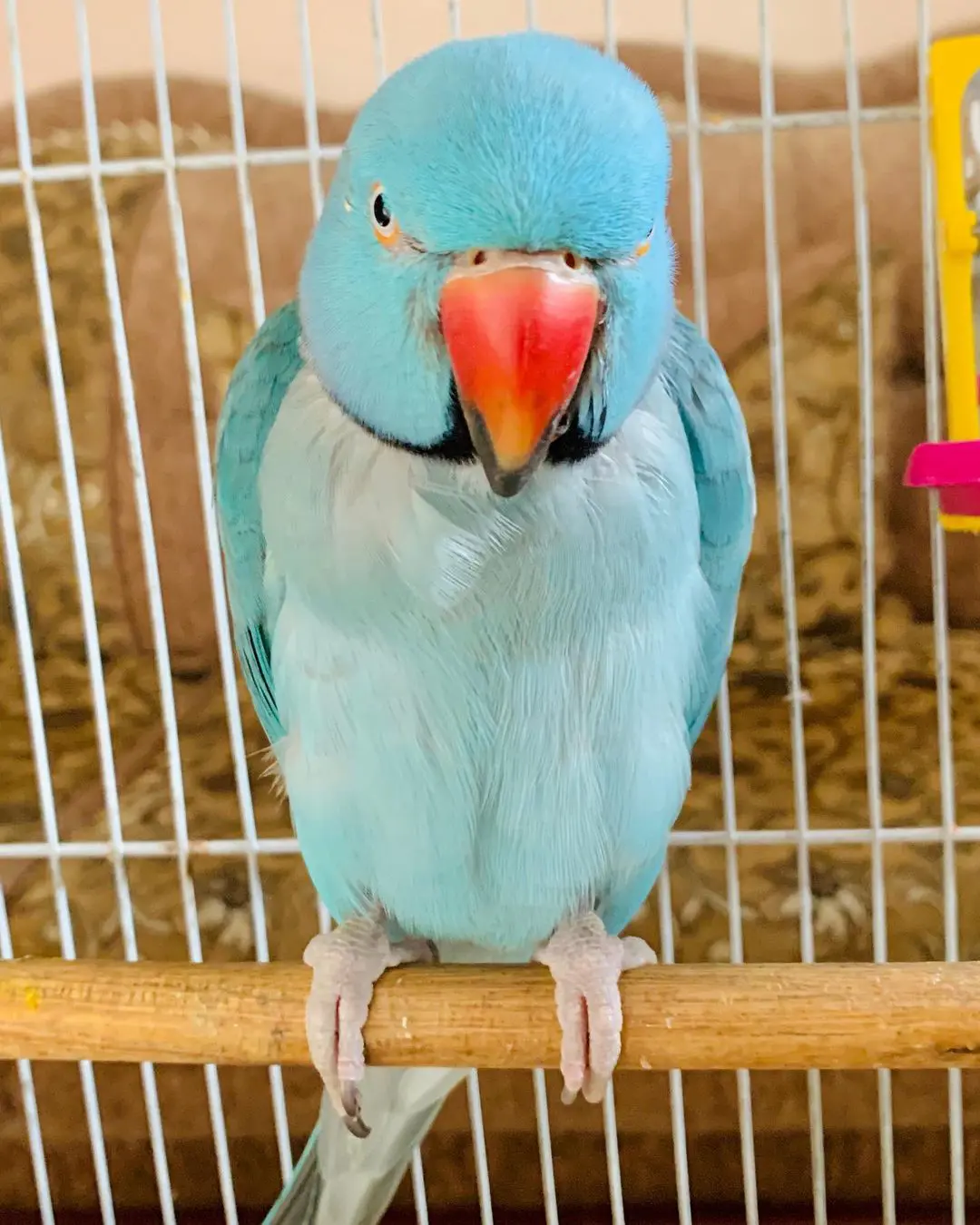
Blue parrots are captivating birds known for their stunning plumage and charismatic personalities. Originating from various parts of the world, these avian wonders have captured the hearts of bird enthusiasts everywhere.
Whether you're in North or South America, Europe, or elsewhere, blue parrots can be found in pet stores, aviaries, and even in the wild.
However, before bringing one home as a pet, it's important to learn more about these fascinating birds. Here are some interesting facts about blue parrots that will deepen your appreciation for these beautiful creatures.
1. Blue Parrots Come In Various Species
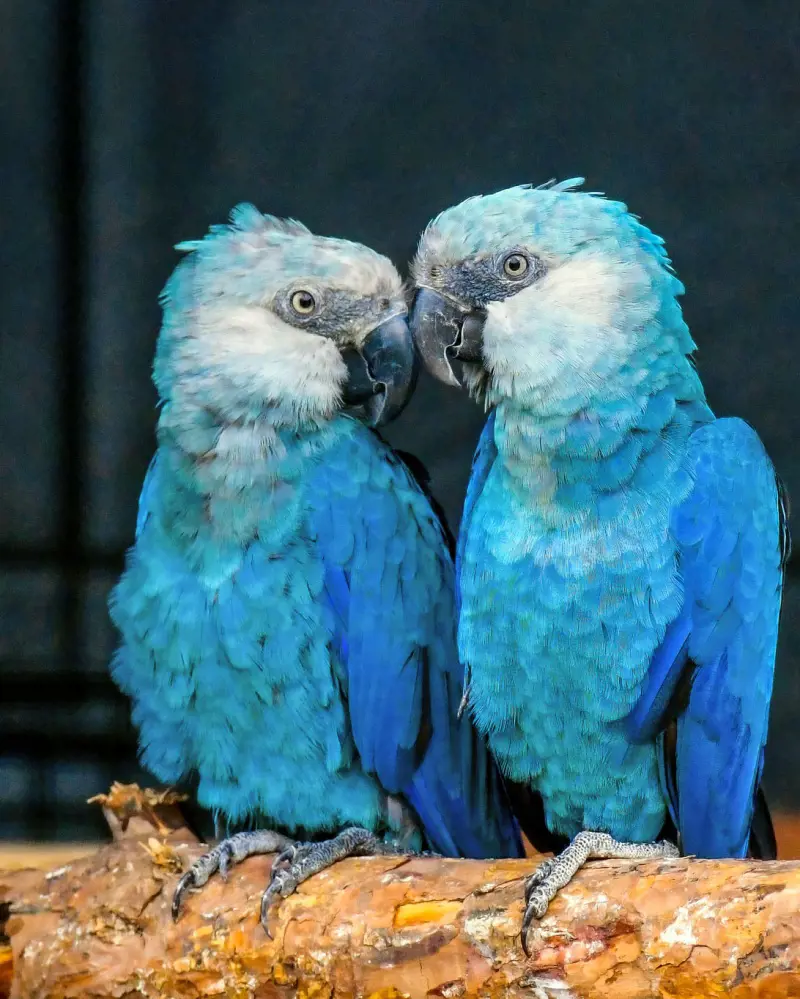
Blue Parrots come in many different types, each with its own special traits and beauty. One of the most impressive is the Hyacinth Macaw, which stands out with its big size and gorgeous blue feathers.
Another interesting kind is the Australian Budgerigar, also called Bird Budgies. They're small and brightly colored, and they're really good at copying sounds.
2. Blue Parrots Have Specialized Color Pigments
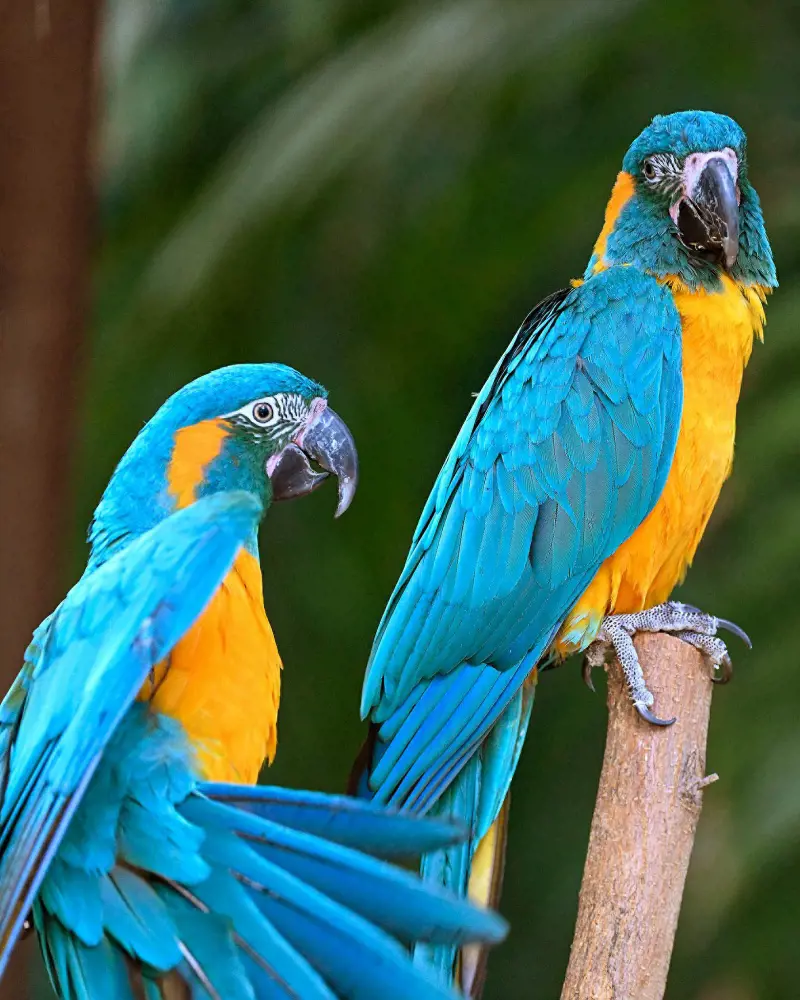
The captivating blue hues found in parrots are a result of specialized color pigments unique to these avian wonders. These blue birds possess pigments called psittacins which are responsible for their vibrant feather colors.
The specific arrangement of psittacins in the feather's microstructure interacts with light, creating the brilliant blues that adorn these birds. Notably, these parrots' intense cobalt hue is a result of both psittacins and microscopic structures that scatter light, enhancing the depth of their blue plumage.
3. These Parrots Are Highly Intelligent
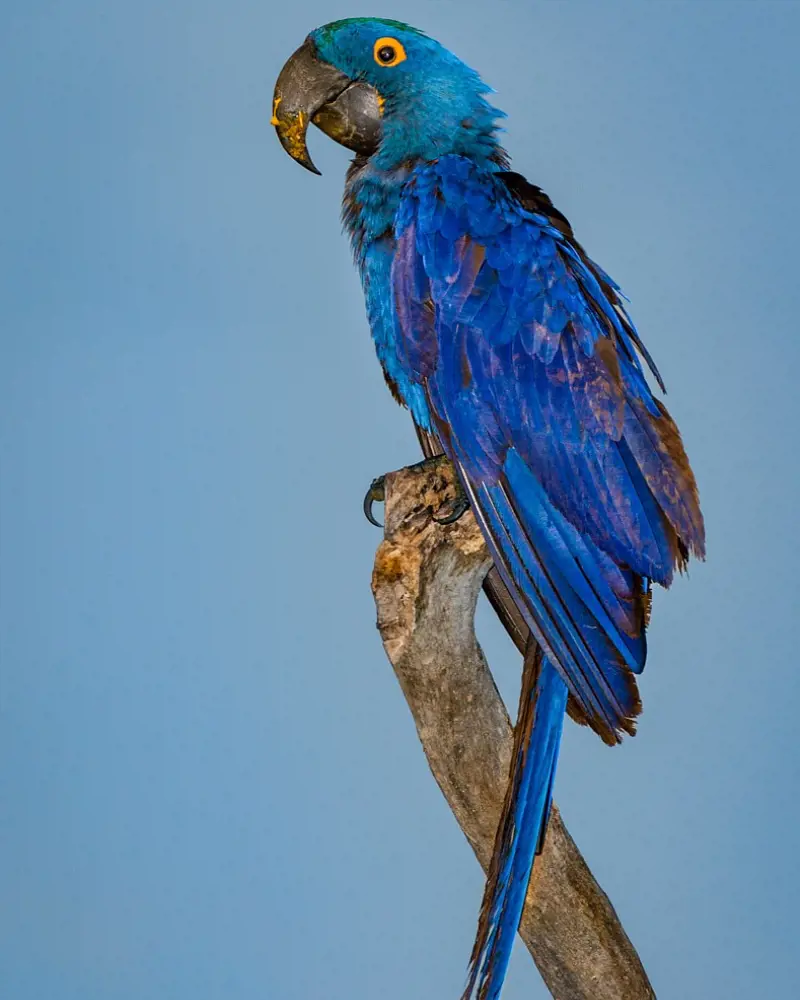
Renowned for their striking beauty, these parrots are equally celebrated for their remarkable intelligence. Especially, the African Grey Parrot showcases advanced problem-solving abilities and exceptional cognitive skills.
Studies have shown that some blue parrot species can grasp complex concepts, use tools, and even exhibit a form of self-awareness.
The cognitive prowess of blue parrots extends beyond mere mimicry, showcasing a level of intelligence that continues to intrigue scientists and bird enthusiasts alike.
4. They Prefer To Live In Flocks
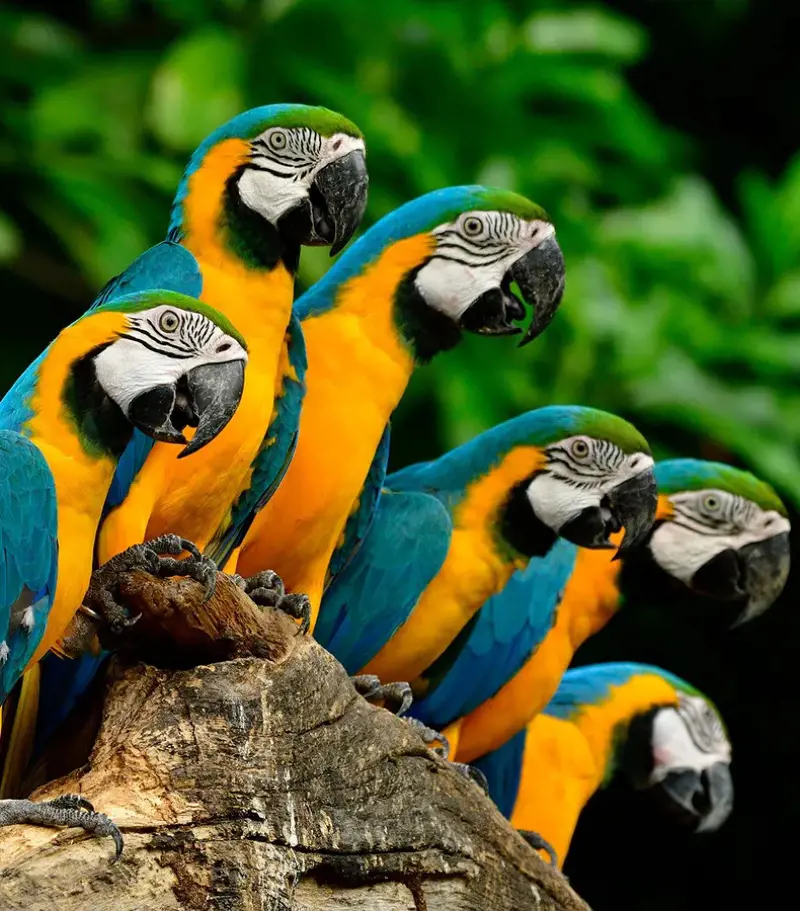
These parrots exhibit a strong preference for communal living and thrive in vibrant flocks. This social behavior is particularly prominent among species like the Budgerigar and the Scarlet Macaw.
Living in flocks has many advantages from enhanced protection to improved foraging efficiency. In these dynamic groups, intricate communication systems develop, involving a variety of vocalizations and body language.
5. Blue-Fronted Amazons Have Distinctive Facial Markings
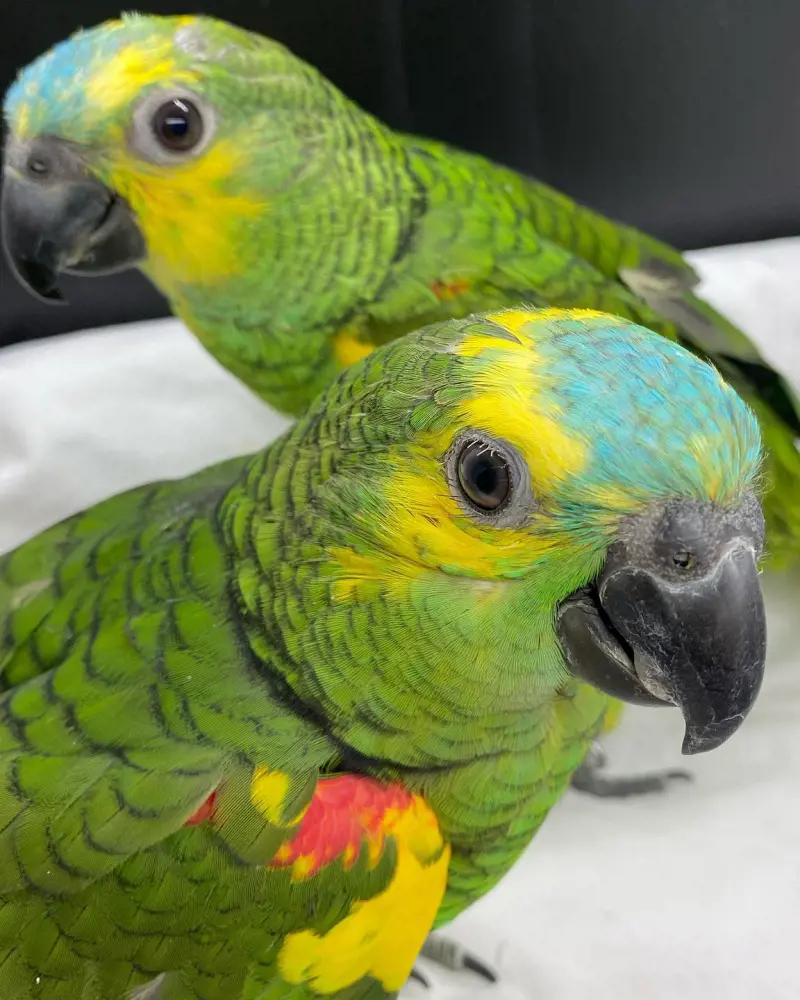
Blue-fronted Amazons are a captivating species within the blue parrot family that are renowned for their distinctive facial markings. They boast a vibrant splash of blue on their foreheads, creating a striking contrast against their predominantly green plumage.
This unique facial feature becomes even more captivating during moments of excitement or communication when the blue intensifies. The intricate combination of colors in their facial markings not only serves as a visual spectacle but also plays a role in social interactions within the flock.
6. Blue Parrots Are Primarily Herbivores
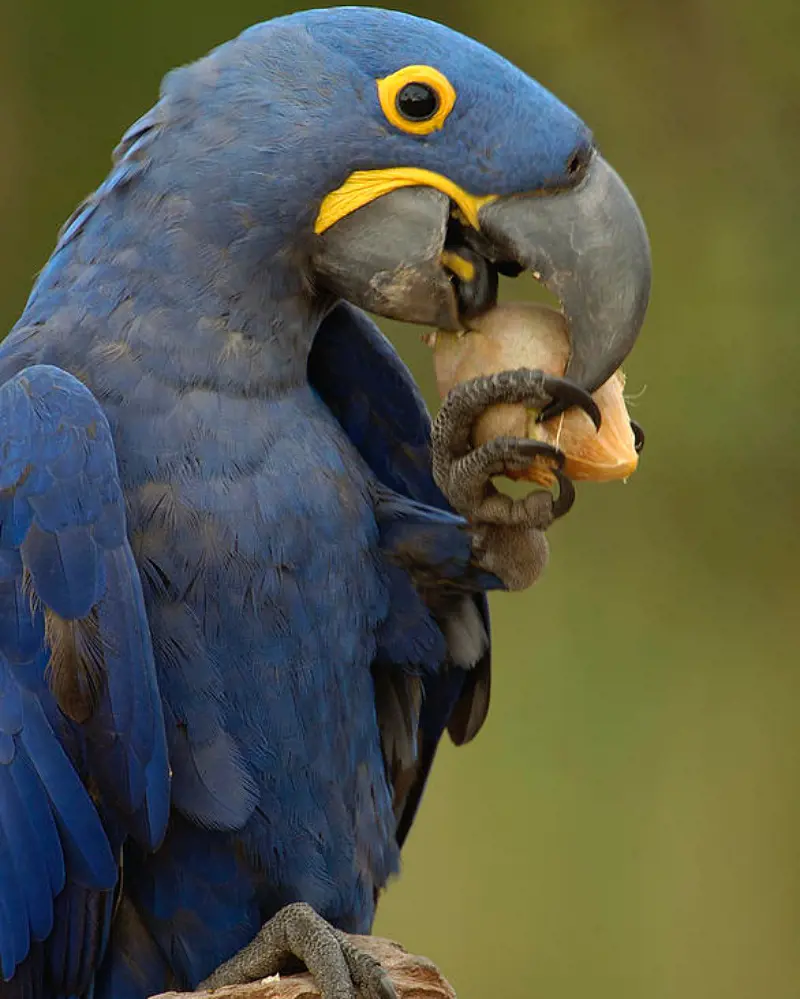
Species like the Hyacinth Macaw and the Budgerigar are primarily herbivores, showcasing a diet rich in fruits, nuts, seeds, and vegetation. The big ones rely on palm nuts as a significant part of their diet and use their powerful beak to crack open the tough outer shells.
On the other hand, the smaller parrots in a variety of seeds, fruits and greens. This herbivorous preference aligns with their natural habitats where these parrots forage for plant-based foods.
7. The Blue-Crowned Conure Exhibit Playful Nature
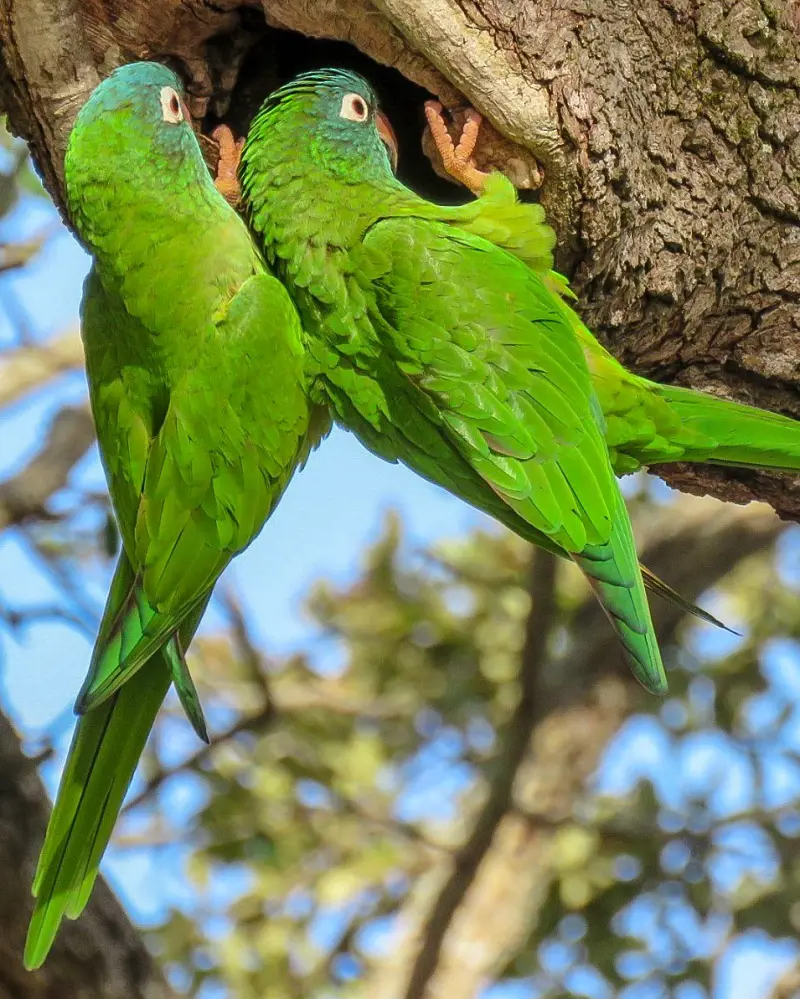
The Blue-Crowned Conure s renowned for its playful nature that adds a touch of joy to avian enthusiasts' hearts. These charming birds engage in a myriad of playful activities that showcase both their intelligence and social inclination.
These blue parrots enjoy the exploration of their surroundings with acrobatic flair and display love for toys that challenge their problem-solving skills. Additionally, these conures thrive on social interaction, often engaging in games and vocalizations with both their avian companions and human caretakers.
8. Blue Parrots Often Use Their Feet To Eat
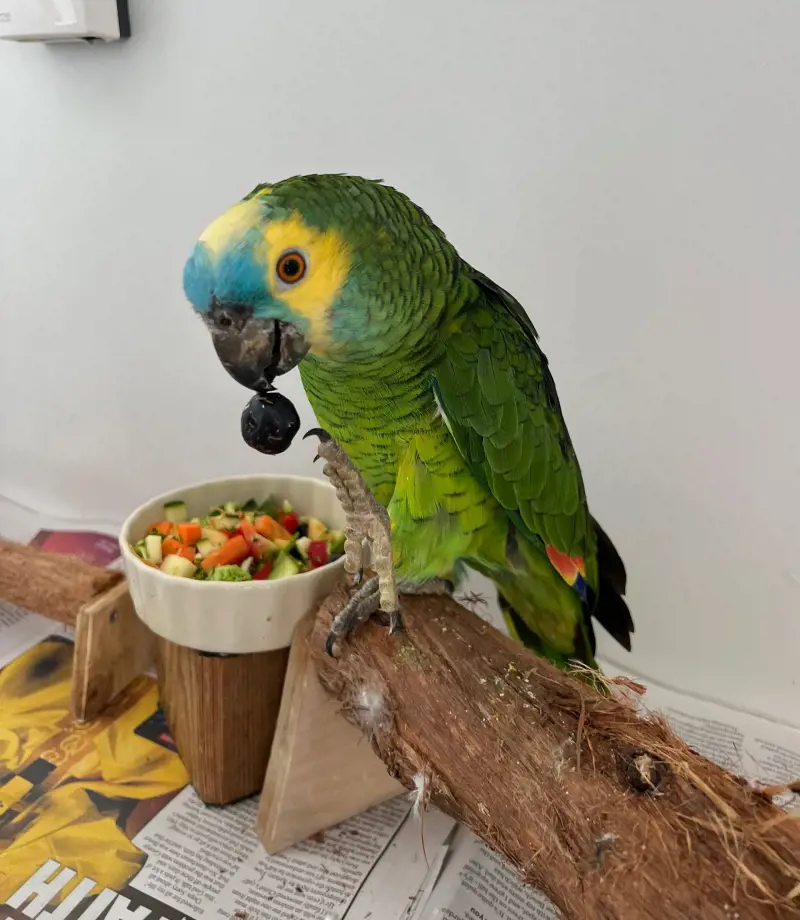
With their unique and adaptable anatomy, these parrots often showcase a fascinating dining behavior by using their feet to eat their food. This behavior is particularly evident in species like the African Grey Parrot and the Amazon Parrot.
These colorful birds adeptly use their feet to manipulate and hold food which showcases a level of dexterity that adds a delightful charm to their dining habits.
Whether it is holding a piece of fruit or a nut, this distinctive feeding behavior emphasizes the importance of their feet as multifunctional tools in their daily lives.
9. These Parrots Are Skilled Climbers
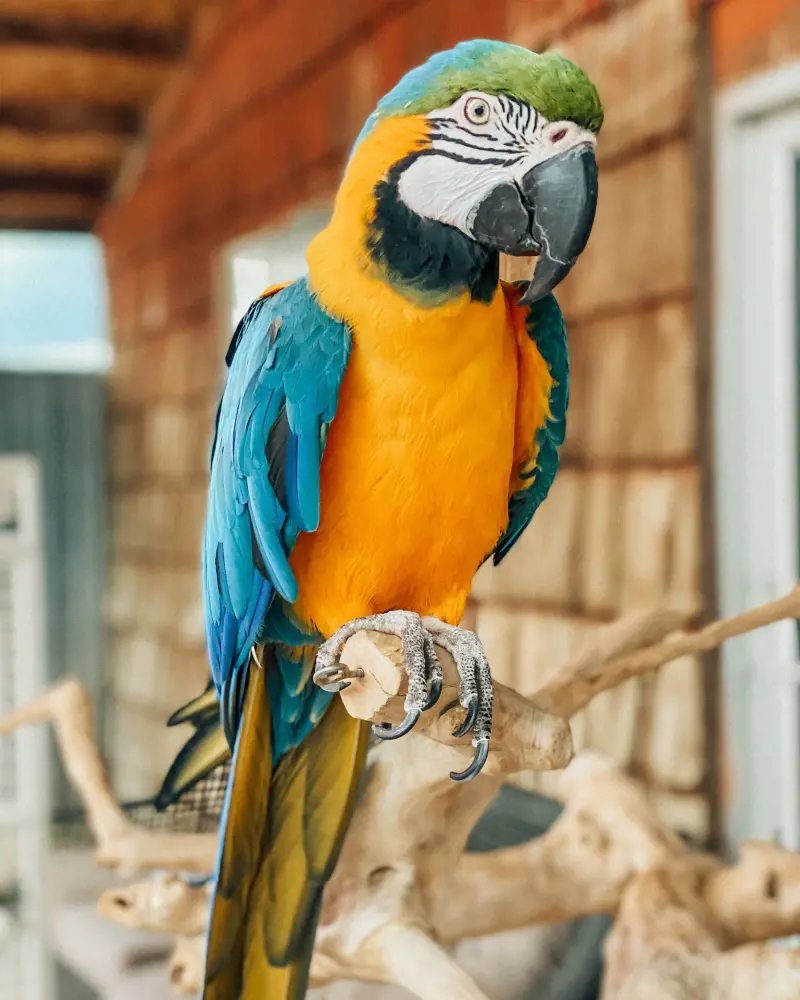
Blue parrots like the Blue and Gold Macaw and the Eclectus Parrot exhibit remarkable climbing prowess that adds an adventurous dimension to their lives. With strong and agile bodies, these parrots are skilled climbers, navigating tree branches and vertical surfaces with ease.
This skill is not only a means of exploration but also serves practical purposes in their natural habitats, aiding in foraging and avoiding predators.
Witnessing these birds effortlessly ascend to great heights underscores their adaptability and the dynamic ways in which they engage with their surroundings.
10. Their Plumage Plays A Role In Courtship Displays
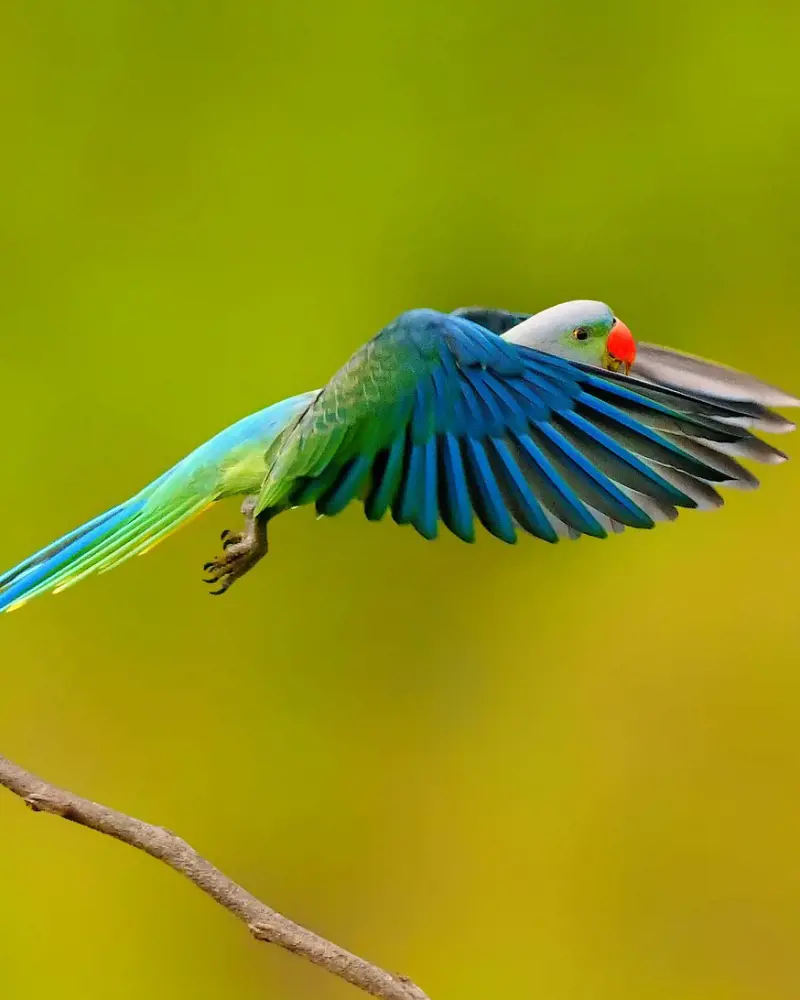
Species like the Pacific Parrotlet and the Blue-Fronted Amazon employ vibrant and visually striking plumage to communicate during courtship rituals.
The vivid colors and patterns serve as both a means of attraction and a form of non-verbal communication. Furthermore, this behavior also highlights the role of plumage in fostering bonds and ensuring successful mating within the diverse realm of blue parrots.
11. Blue Parrots Have Zygodactyl Feet
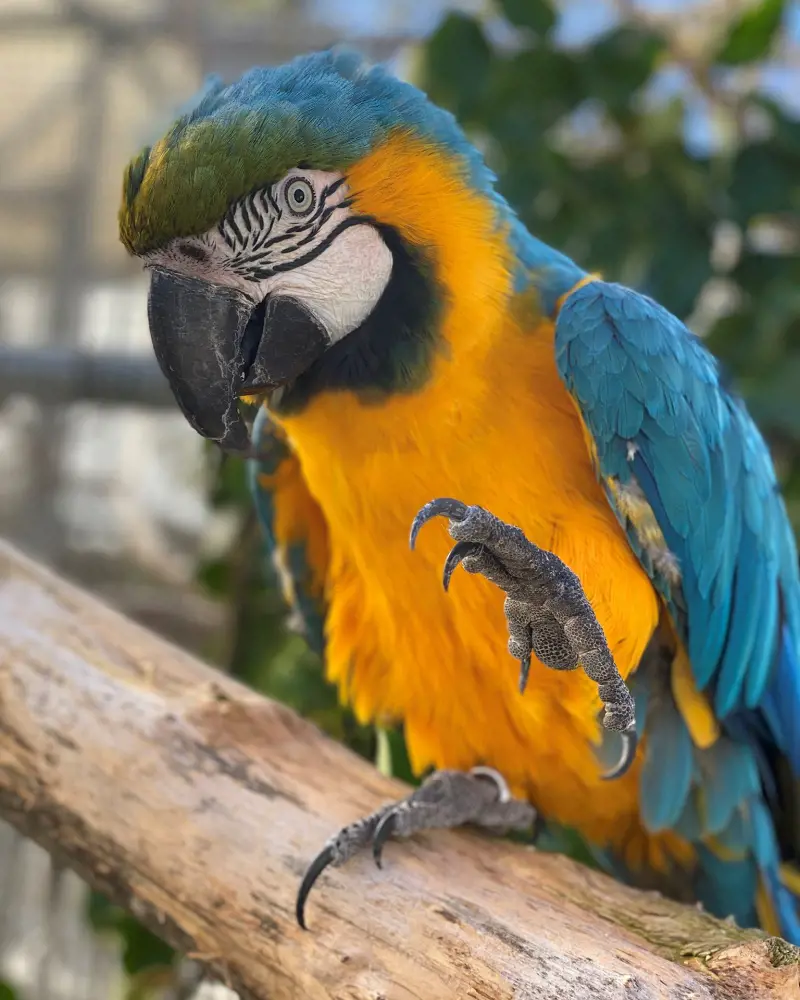
One of the distinctive features of these birds is their zygodactyl feet. This unique foot structure, characterized by two toes pointing forward and two toes pointing backward, provides them with exceptional gripping abilities.
This specialized foot anatomy showcases the adaptability of these avian wonders to various environments, enabling them to navigate their surroundings with agility and finesse.
Observing these birds utilizing their zygodactyl feet underscores the intricate ways in which their anatomy contributes to their daily activities.
12. Eclectus Parrots Showcase Sexual Dimorphism
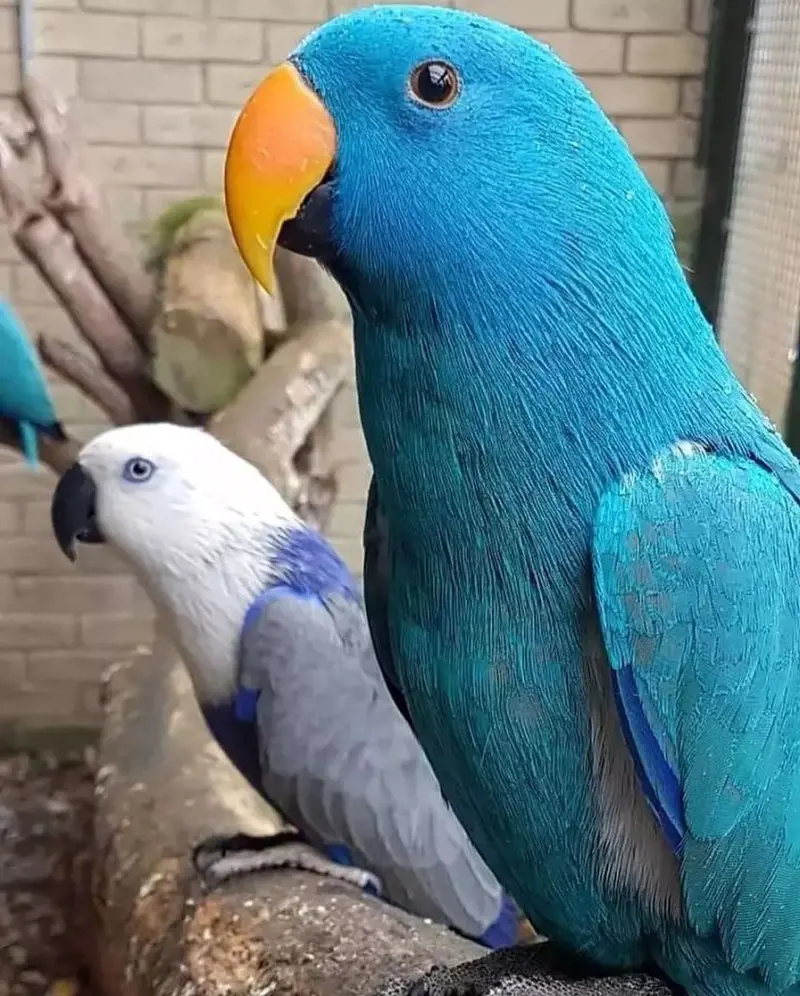
The world of blue parrots reveals a fascinating aspect with the Eclectus Parrots which showcases striking sexual dimorphism that sets them apart in the avian realm. Unlike many parrot species, the Eclectus birds display a stark contrast in their plumage.
The males have emerald green feathers while the females are adorned in a stunning combination of red and purple hues. This distinct difference in coloration is not merely a visual spectacle but serves a crucial purpose in their natural behavior while also adding an extra layer of intrigue.
13. Blue Parrots Have A Unique Vocalization System
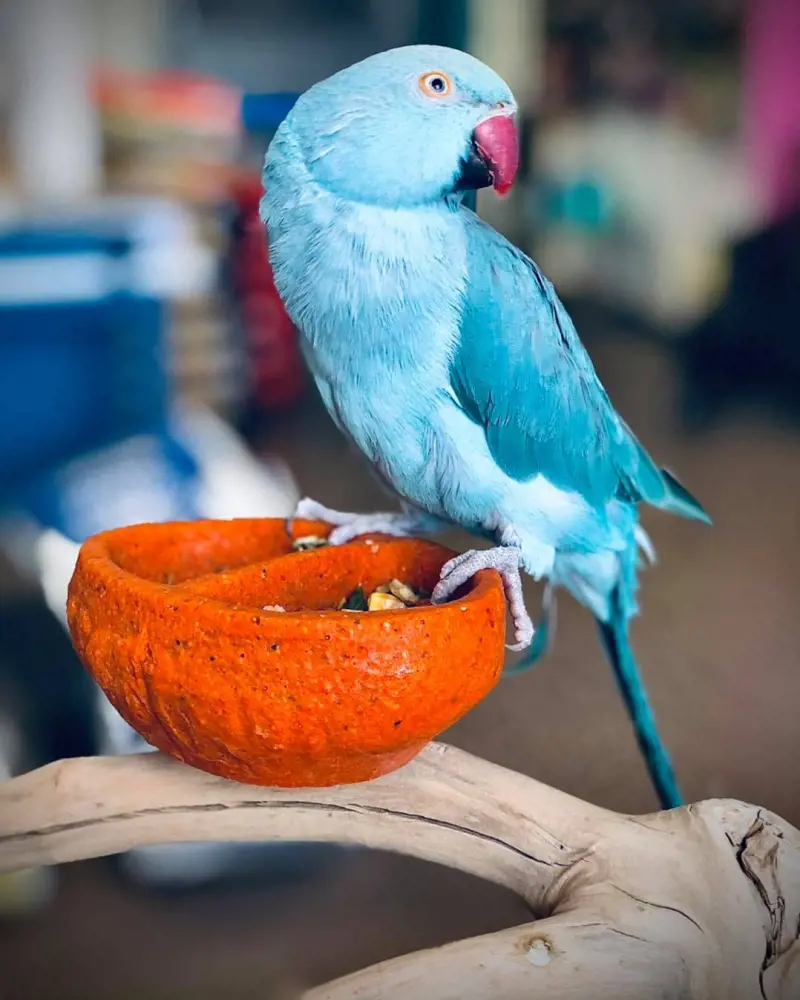
Parrot species have a unique and intricate vocalization system that adds a layer of richness to their communication. These birds exhibit an astonishing capacity for mimicry, showcasing their ability to imitate various sounds with remarkable accuracy.
The former species can repeat words and even comprehend and use them in context while the latter one can produce a musical tone too. This vocal prowess is not just a means of communication but also plays a vital role in social bonding within the flock.
14. They Engage In Dust Bathing
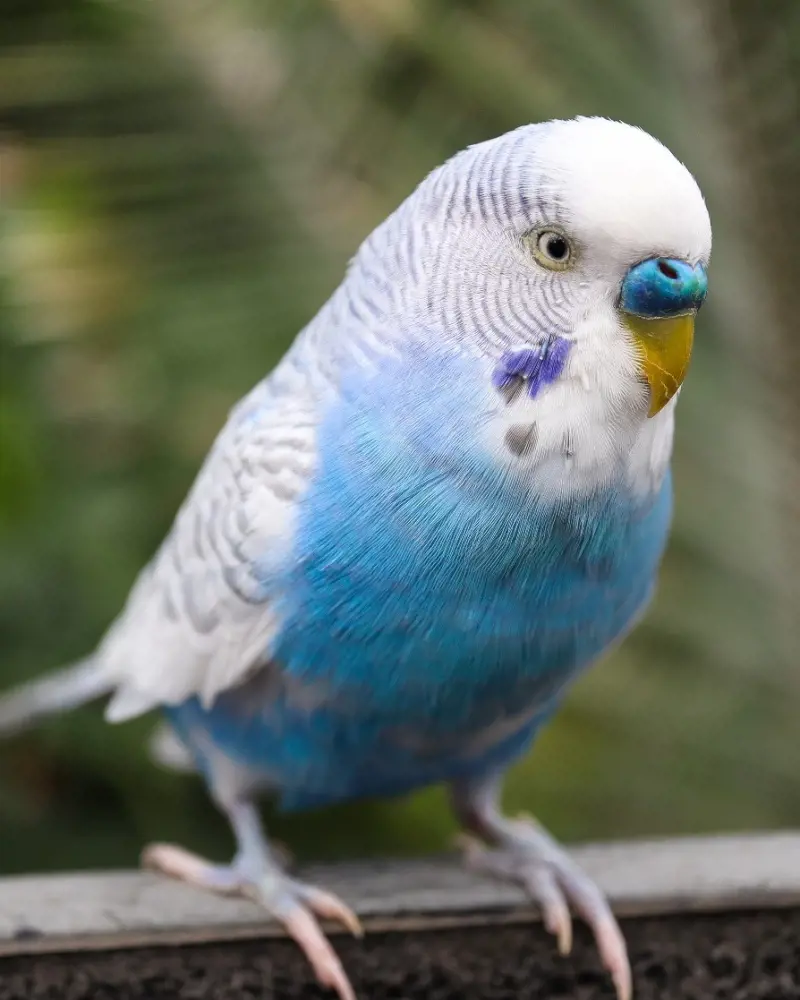
One of the most intriguing behaviors of blue parrots like the Cockatiel and the African Grey Parrot is their habit of dust-bathing. This avian ritual involves the parrots actively taking dust or sand baths to maintain their plumage and promote overall hygiene.
The Cockatiel, adorned with charming crest feathers, often flutters and rolls in fine dust which allows the particles to penetrate their feathers and absorb excess oil.
This natural grooming behavior not only helps in keeping their plumage clean but also assists in controlling parasites and maintaining feather health.
15. Blue Parrots Are Popular Pets

Blue parrots are among the most popular choices for pet birds, captivating enthusiasts worldwide with their vibrant colors, intelligence and engaging personalities. The Budgerigar, affectionately known as the Budgie, stands out as one of the most beloved pet birds.
Their small size, playful nature and ability to mimic speech make them ideal companions. Another favorite is the Blue and Gold Macaw, prized for its striking appearance and outgoing demeanor. These majestic birds form strong bonds with their human caretakers.
16. Their Hues Can Fade With Age
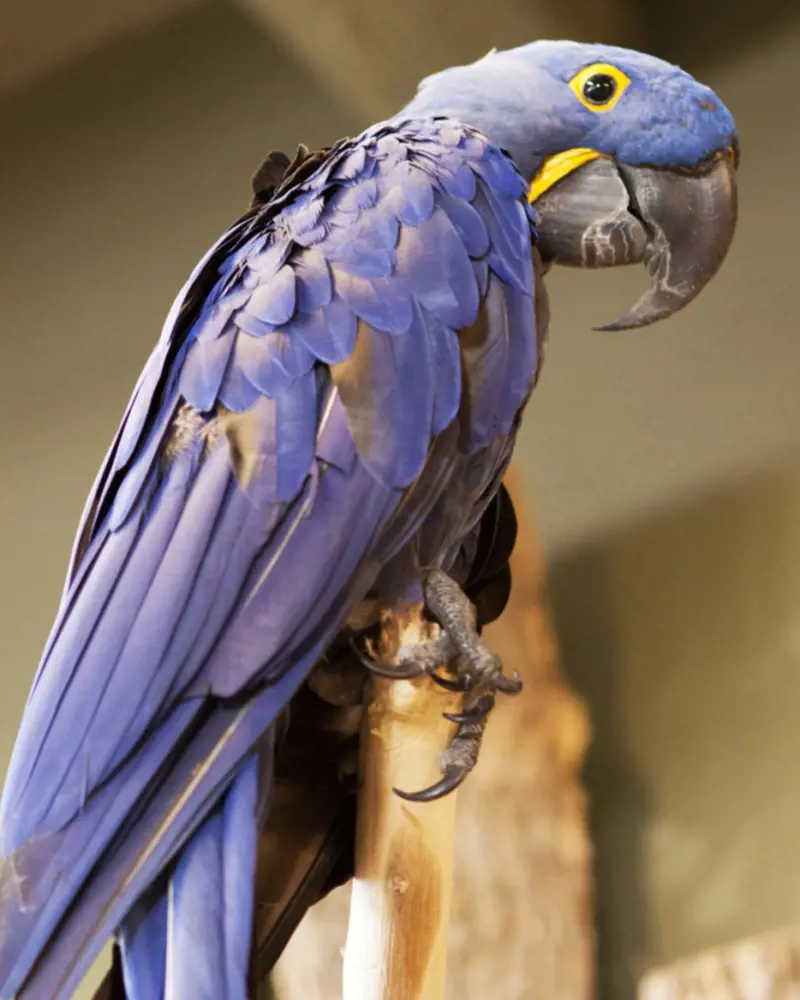
It is noteworthy that the vibrant hues of their plumage can undergo subtle changes as they age. This phenomenon is particularly evident in species.
While their feathers exhibit a brilliant blue and gold palette in their youth, the intensity of these hues can gradually fade with the passing years. Factors such as exposure to sunlight, diet and overall health can influence the vibrancy of their plumage.
17. They Play Essential Roles In Seed Dispersal
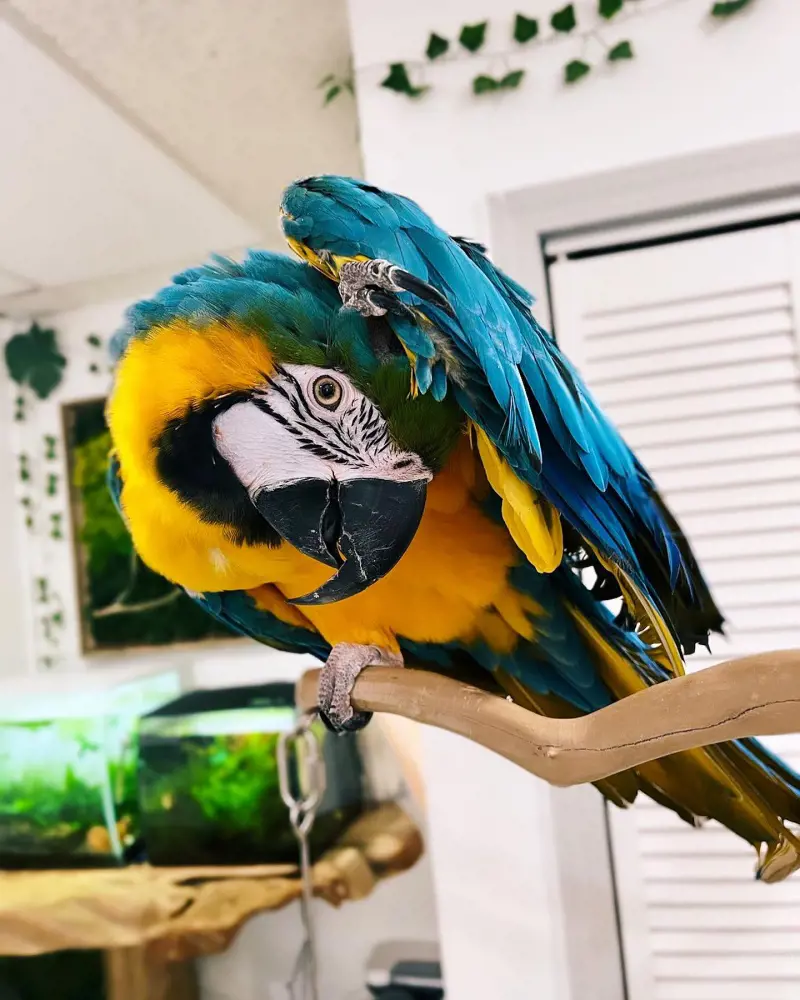
These birds play crucial roles in seed dispersal within their natural ecosystems, contributing to the health and diversity of plant life. Parrots have specialized diets that often include seeds from various fruits and nuts.
This symbiotic relationship between these avian wonders and plants highlights their ecological significance in maintaining the balance of their habitats. The unique dietary habits and foraging behaviors of these parrots showcase how they actively participate in the intricate web of life.
18. Blue and Gold Macaws Are Known For Their Large Size
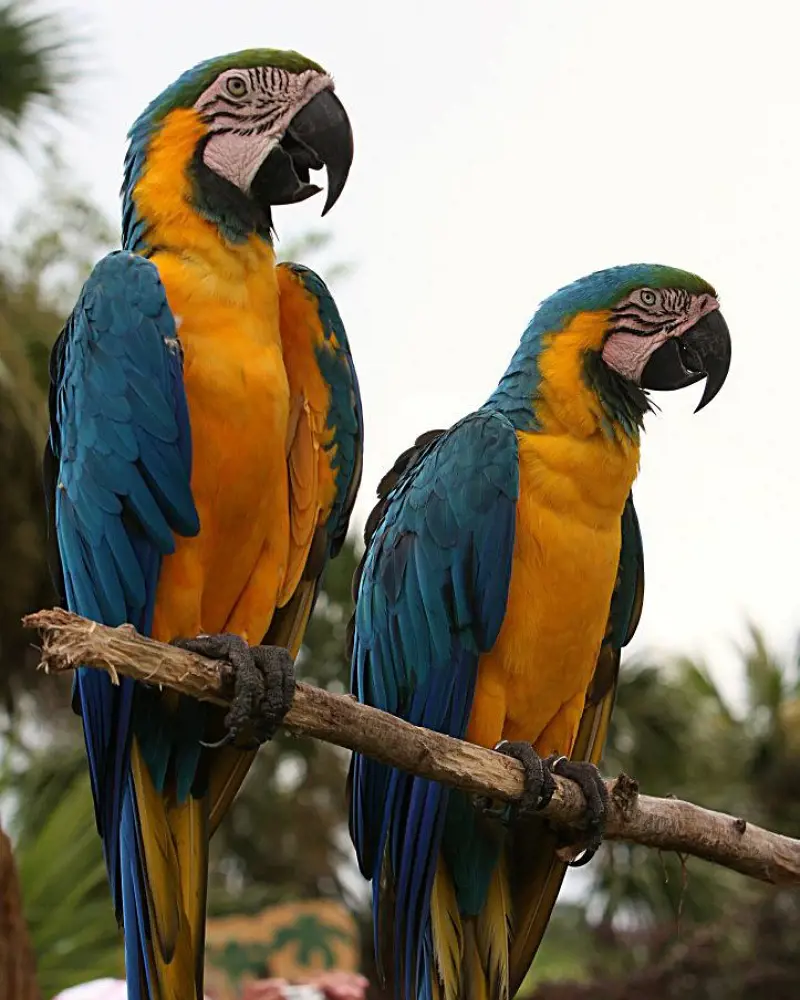
Among the magnificent blue parrots, the Blue and Gold Macaw stands out not only for its vibrant plumage but also for its impressive size. These majestic birds are recognized for their substantial build, making them one of the largest parrot species in the world.
With a wingspan that can span up to 41 inches and a length of around 33 inches from head to tail, these birds command attention with their sheer physical presence. This size coupled with their striking blue and gold feathers, contributes to their awe-inspiring and regal appearance.
Recent posts
Top Lists
